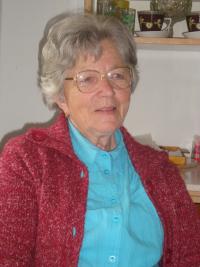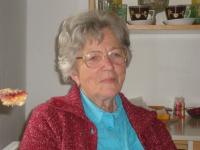Josef, you gotta hide him somewhere here! You live in a remote place
Anna Hejpetrová, née Beranová, was born July 20, 1936 in Lhota u Sv. Anny in the Strakonice district. Her father worked as a wheelwright and her mother was a housewife. From April 20, 1945 the family was providing a hiding place to two prisoners who had run away from a death transport in Katovice after the train had been attacked by a ground-attack aircraft. Her father was a member of the resistance organization Niva. After the war Anna Beranová completed a secondary nursing school and worked in Strakonice as a nurse. She retired in 1991.


